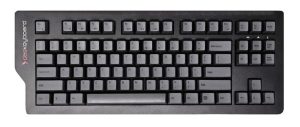How Many Switches in a 75 Keyboard
When it comes to the intriguing world of mechanical keyboards, one question that often piques the curiosity of enthusiasts is: How many switches are there in a 75 key mechanical keyboard? These compact keyboards are known for their balance between size and functionality. To answer this question, we must understand that a typical 75-key layout includes alphanumeric keys, a function row, navigation keys, modifiers, and special keys. In a standard 75% layout, you’ll find approximately 75 keys with individual switches underneath. However, it’s crucial to note that some variations may exist in different keyboard models, so consulting the specific keyboard’s documentation is advisable for precise switch count confirmation.
Mechanical switches are at the heart of any mechanical keyboard, influencing the typing experience, durability, customization, and typing speed. Ultimately, the switch count is just one piece of the puzzle when choosing the right mechanical keyboard, with personal preference and typing style playing significant roles in the decision-making process. Understanding these aspects empowers enthusiasts to make informed choices and fully appreciate the compact yet powerful design of 75-key mechanical keyboards.
Understanding Keyboard Layouts
Before we delve into the specifics of a 75-key mechanical keyboard, it’s essential to grasp the concept of keyboard layouts. Keyboards come in various layouts, each designed to cater to specific needs and preferences. The most common keyboard layouts include:
Full-Size Keyboard:
This layout features a complete set of keys, including function keys, a numeric keypad, and navigation keys (arrows).
Tenkeyless (TKL) Keyboard:
TKL keyboards omit the numeric keypad, resulting in a more compact design while retaining function and navigation keys.
60% Keyboard:
These keyboards are ultra-compact and lack the numeric keypad and function row, providing a minimalist typing experience.
75% Keyboard:
A 75% keyboard is a balance between compactness and functionality. It typically includes a compact layout with function and navigation keys but excludes the numeric keypad and function row. Also, read about Wireless Earbuds Set and features
Anatomy of a 75-Key Mechanical Keyboard
Now, let’s dissect a 75-key mechanical keyboard to better understand its layout and the number of switches it houses. A typical 75-key layout includes the following key sections:
Alphanumeric Keys:
These keys include the letters, numbers, and symbols you’d find on a standard keyboard.
Function Row:
A 75% keyboard usually retains the function row (F1-F12) as secondary functions on the number row.
Navigation Keys:
The keyboard incorporates arrow keys for navigation.
Modifiers:
These keys include Shift, Ctrl, Alt, and sometimes additional modifiers like Fn.
Special Keys:
Special keys like Delete, Home, End, Page Up, and Page Down are often present as secondary functions on other keys. For interesting facts visit our website gadgetgurusweb.com

Counting the Switches
To determine the number of switches in a 75-key mechanical keyboard, we need to consider the keys that have corresponding switches underneath. In a standard 75% layout, there are approximately 75 keys that have individual switches. These include the alphanumeric keys, function row, navigation keys, modifiers, and special keys.
However, it’s important to note that some 75% of keyboards may have slight variations in their layouts. Manufacturers may choose to include or exclude certain keys, or they may offer different keycap profiles that affect the total switch count. Therefore, it’s advisable to consult the specific keyboard’s documentation or product details to confirm the exact switch count.
The Role of Switches
Understanding the number of switches in a keyboard is not just a matter of curiosity; it also has practical implications. Mechanical switches are at the heart of any mechanical keyboard and play a crucial role in determining the typing experience.
Key Feel:
The type of switch used affects the tactile feedback and actuation force required for each keypress. Different switches cater to different typing preferences, whether you prefer a clicky, tactile response or a smoother, quieter keystroke.
Durability:
Mechanical switches are renowned for their durability. They are rated for a certain number of keypresses, often in the millions, ensuring that your keyboard can withstand years of use.
Customization:
Mechanical keyboards offer a world of customization. Enthusiasts can swap out switches to tailor the typing experience to their liking.
Typing Speed and Accuracy:
The type of switch can impact your typing speed and accuracy. Some switches are better suited for rapid typing, while others may be preferred for gaming or precise tasks.

Conclusion
In the realm of mechanical keyboards, the number of switches in a 75-key layout is approximately 75. However, it’s essential to remember that slight variations in layouts can occur between different keyboard models. Understanding the switch count is just one piece of the puzzle when it comes to choosing the right mechanical keyboard for your needs.
Ultimately, the typing experience, key feel, and switch type should also factor into your decision. Mechanical keyboards offer a vast array of options, allowing you to tailor your keyboard to your specific preferences. So, the next time you encounter a 75-key mechanical keyboard, you’ll have a better grasp of the mechanics behind its compact yet powerful design, making your choice of keyboard all the more informed and enjoyable.
FAQs
- What is a 75-key mechanical keyboard?
A 75-key mechanical keyboard is a compact keyboard layout that strikes a balance between size and functionality. It typically includes alphanumeric keys, a function row, navigation keys, modifiers, and special keys while excluding the numeric keypad and function row found in larger keyboards.
- How many switches are there in a 75-key mechanical keyboard?
In a standard 75% layout, there are approximately 75 keys that have individual switches underneath. However, slight variations in layouts can occur between different keyboard models.
- What are the advantages of a 75-key mechanical keyboard?
75-key mechanical keyboards are known for their portability, minimalist design, and efficiency. They are compact and easy to carry, making them ideal for on-the-go use. Their minimalist design removes unnecessary keys, and the compact layout places frequently used keys closer together, reducing hand movement during typing.
- Can I customise the switches on a 75-key mechanical keyboard?
Yes, many 75-key mechanical keyboards allow enthusiasts to customize the switches. You can swap out switches to tailor the typing experience to your preference, whether you prefer a clicky, tactile response or a smoother keystroke.
- Are there variations in 75-key keyboard layouts?
Yes, there can be slight variations in 75-key keyboard layouts between different keyboard models and manufacturers. Some may include or exclude certain keys, or they may offer different keycap profiles, affecting the total switch count. It’s advisable to consult the specific keyboard’s documentation for precise layout details.
